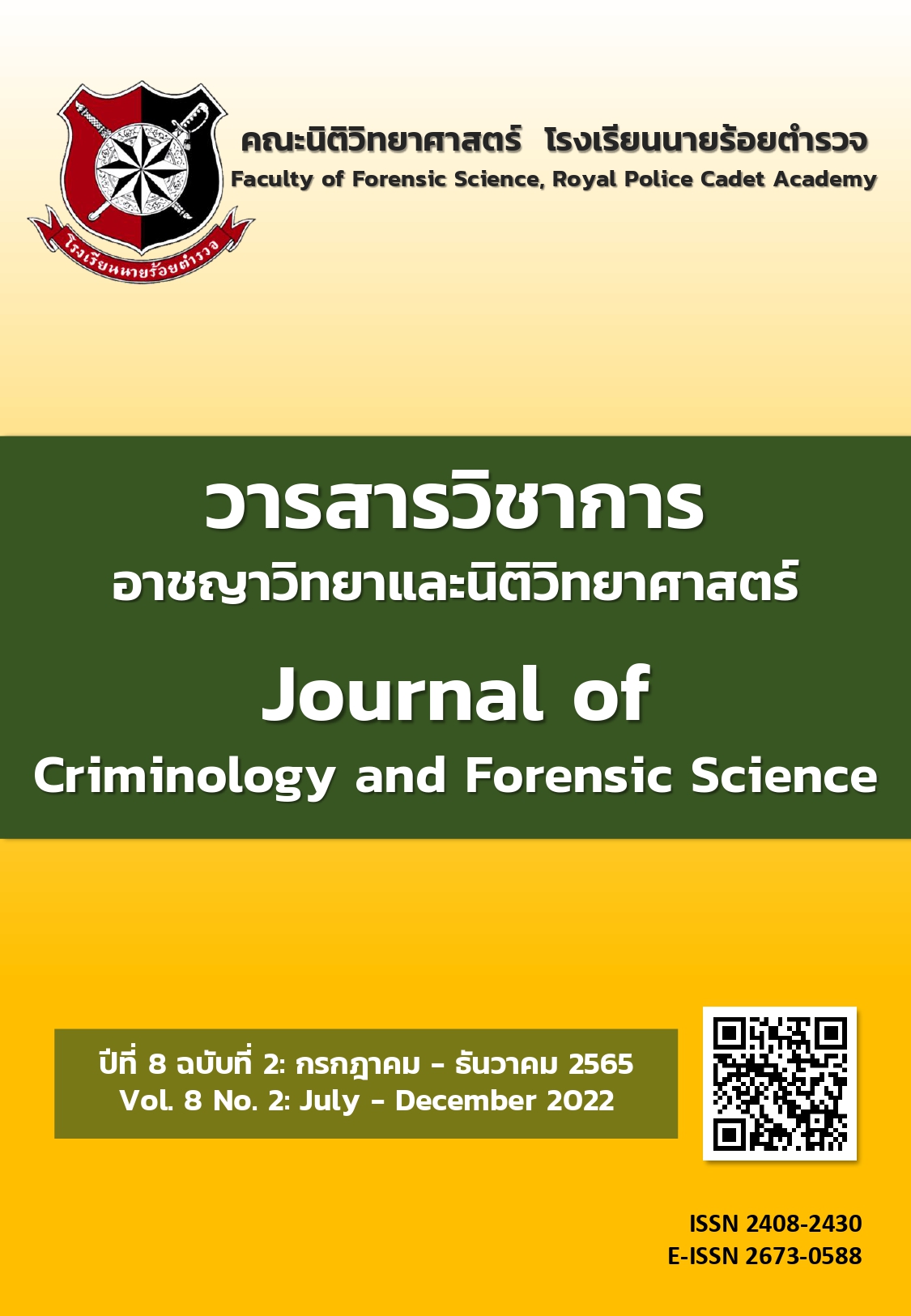ข้อเสนอแนวทางการเพิ่มประสิทธิภาพความแม่นยำในขั้นตอนการชี้ตัวผู้ต้องหา
Main Article Content
บทคัดย่อ
การชี้ตัวผู้ต้องหาเป็นอีกหนึ่งในขั้นตอนที่สำคัญเนื่องจากเป็นขั้นตอนที่สามารถช่วยยืนยันได้อีกทางว่าผู้ต้องหาที่เจ้าหน้าที่ตำรวจจับกุมมาด้วยพยานหลักฐานอื่นที่เกี่ยวข้องกับคดีและคำให้การของพยาน เป็นผู้กระทำความผิดจริง ไม่ใช่เป็นการจับกุมผิดตัว อย่างไรก็ดี การชี้ตัวไม่ใช่เป็นสิ่งที่ทำได้โดยง่าย เนื่องจากต้องอาศัยความทรงจำของพยาน รวมถึงการปฏิบัติการที่รัดกุมของเจ้าหน้าที่ ดังนั้นจึงนำมาสู่การเสนอแนะแนวทางเพิ่มประสิทธิภาพจากขั้นตอนปฏิบัติเดิมที่มีอยู่ โดยอ้างอิงจากงานวิจัยที่ได้รับการยอมรับในต่างประเทศ จากการวิเคราะห์พบว่าขั้นตอนที่เป็นแนวทางปฏิบัติในปัจจุบันมีความเหมาะสมอยู่แล้ว หากแต่ควรเพิ่มรายละเอียดหรือขั้นตอนบางอย่างเพื่อให้เพิ่มประสิทธิภาพมากยิ่งขึ้น เช่น การชี้แจงขั้นตอนให้ชัดเจนว่าอาจจะมีหรือไม่มีผู้ต้องหาปรากฎในกลุ่มคนที่มาให้ชี้ตัวก็ได้ (Unbiased Instruction) การปกปิดตัวตนของผู้ต้องหาต่อทั้งผู้ชี้ตัวและเจ้าหน้าที่ผู้ดำเนินการ (Double-Blind) เป็นต้น
Article Details

อนุญาตภายใต้เงื่อนไข Creative Commons Attribution-NonCommercial-NoDerivatives 4.0 International License.
เนื้อหาและข้อมูลในบทความที่ลงตีพิมพ์ใน วารสารวิชาการอาชญาวิทยาและนิติวิทยาศาสตร์ โรงเรียนนายร้อยตำรวจ ถิอว่าเป็นข้อคิดเห็นและความรั้บผิดชอบของผู้เขียนบทความโดยตรงซึ่งกองบรรณาธิการวารสาร ไม่จำเป็นต้องเห็นด้วยหรือรับผิดชอบใดๆ
บทความ ข้อมูล เนื้อหา รูปภาพ ฯลฯ ที่ได้รับการตีพิมพ์ใน วารสารวิชาการอาชญาวิทยาและนิติวิทยาศาสตร์ ถือว่าเป็นลิขสิทธิ์ของวารสาร วารสารวิชาการอาชญาวิทยาและนิติวิทยาศาสตร์ หากบุคคลหรือหน่วยงานใดต้องการนำทั้งหมดหรือส่วนหนึ่งส่วนใดไปเผยแพร่ต่อหรือเพื่อกระทำการใดๆ จะต้องได้รับอนุญาตเป็นลายลักษณ์อักษรจาก วารสารวิชาการอาชญาวิทยาและนิติวิทยาศาสตร์ ก่อนเท่านั้น
เอกสารอ้างอิง
Clark, S. E. (2005). A re-examination of the effects of biased lineup instructions in eyewitness identification. Law and Human Behavior, 29(5), 575-604.
Edward G. R., & Fisher, R. P. (1988). The cognitive interview: An innovative technique for questioning witnesses of crime. Journal of Police and Criminal Psychology, 4(2), 2-5.
Greathouse, S. M., & Kovera, M. B. (2009). Instruction bias and lineup presentation moderate the effects of administrator knowledge on eyewitness identification. Law and Human Behavior, 33(1), 70-82.
Lerwongrat, P. (2018). The guideline for developing the process of eyewitness identification. Master of Laws, Chulalongkorn University, Bangkok. (In Thai).
Lindsay, R. C., & Wells, G. L. (1985). Improving eyewitness identifications from lineups: Simultaneous versus sequential lineup presentation. Journal of Applied Psychology, 70(3), 556.
Malpass, R. S., & Devine, P. G. (1981). Eyewitness identification: Lineup instructions and the absence of the offender. Journal of Applied Psychology, 66(4), 482.
Phillips, M. R., McAuliff, B. D., Kovera, M. B., & Cutler, B. L. (1999). Double-blind photoarray administration as a safeguard against investigator bias. Journal of Applied Psychology, 84(6), 940.
Shaw, J. S., Bjork, R. A., & Handal, A. (1995). Retrieval-induced forgetting in an eyewitness-memory paradigm. Psychonomic bulletin & review, 2(2), 249-253.
Sporer, S. L. (1993). Eyewitness identification accuracy, confidence, and decision times in simultaneous and sequential lineups. Journal of Applied Psychology, 78(1), 22.
Srisung, E. (2022). How to identify the accused - complete legal and guidelines for identifying the suspect. Retrieved July 1, 2022. From https://srisunglaw.com/การชี้ตัวผู้ต้องหา/. (In Thai).
Steblay, N. M. (1997). Social influence in eyewitness recall: A meta-analytic review of lineup instruction effects. Law and Human Behavior, 21(3), 283-297.
Steblay, N., Dysart, J., Fulero, S., & Lindsay, R. C. (2001). Eyewitness accuracy rates in sequential and simultaneous lineup presentations: A meta-analytic comparison. Law and human behavior, 25(5), 459-473.
Tunnicliff, J. L., & Clark, S. E. (2000). Selecting foils for identification lineups: Matching suspects or descriptions?. Law and Human Behavior, 24(2), 231-258.


